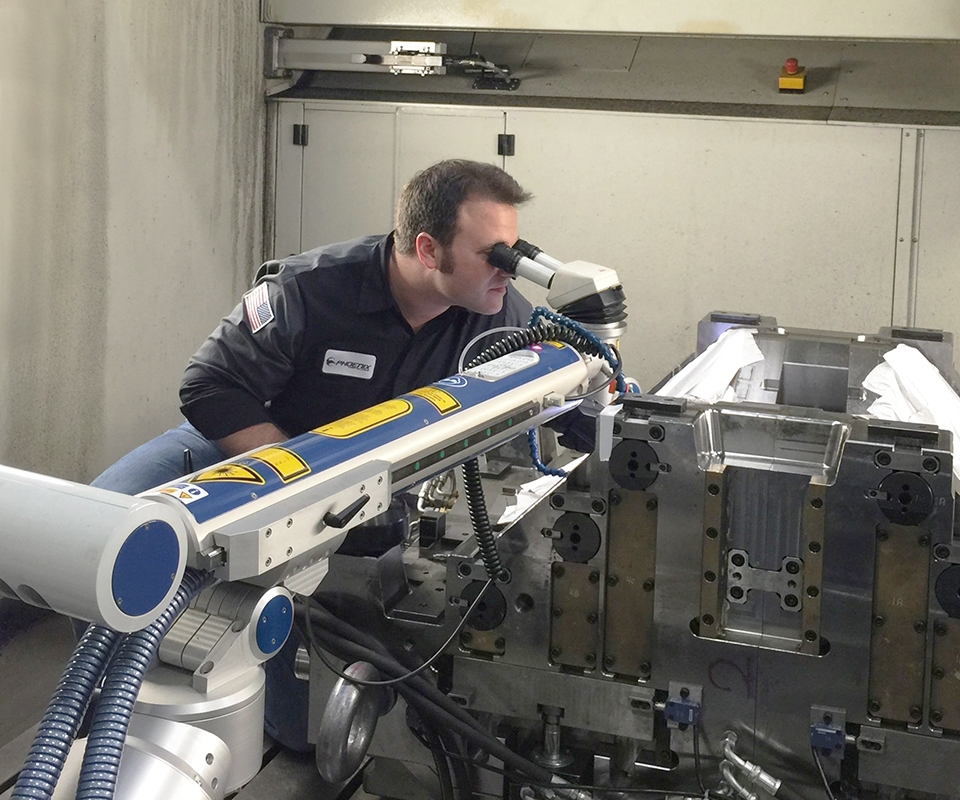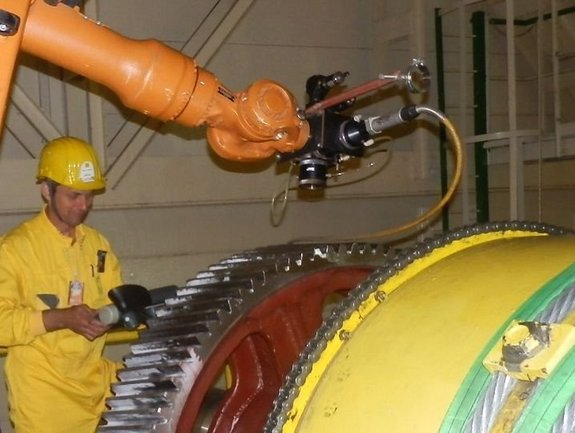Why overheating compromises welds and Montana Mobile Welding and Repair Welding’s approach to fix it
Everything about Welding: Trick Insights Into Techniques and Best Practices for Success
Welding includes a range of strategies, each suited for specific materials and applications. Understanding these methods, such as GMAW, SMAW, and TIG, is vital for attaining perfect outcomes. Moreover, the appropriate tools and safety and security techniques can not be forgotten. As prep work and repairing play important roles in the welding procedure, grasping these aspects can significantly enhance the quality of the last item. What are the crucial variables that assure a successful weld?
Understanding Various Welding Strategies
Welding techniques include a selection of approaches, each fit to certain applications and products. Among one of the most usual techniques are Gas Steel Arc Welding (GMAW), Shielded Steel Arc Welding (SMAW), and Tungsten Inert Gas Welding (TIG) GMAW, likewise recognized as MIG welding, is preferred for its speed and flexibility, making it excellent for slim products. SMAW, or stick welding, is favored for its simpleness and effectiveness in outside atmospheres, particularly with thicker metals. TIG welding provides accuracy and control, making it appropriate for intricate work and non-ferrous metals (Montana Mobile Welding and Repair Belgrade Fabrication). Each method has its one-of-a-kind advantages and factors to consider, allowing welders to select the most effective approach based upon the job's requirements, product type, and desired outcomes. Recognizing these techniques is important for effective welding
Necessary Welding Tools and Tools
While numerous welding methods need specific skills, the ideal tools and tools are similarly essential for accomplishing top quality results. Important welding devices includes welding equipments, which vary relying on the method-- such as MIG, TIG, or stick welding. Safety equipment, consisting of helmets, aprons, and handwear covers, assurances safety and security and convenience throughout the procedure. Additionally, fixtures and clamps help safeguard materials in location, ensuring accuracy in welds. Consumables like welding poles, wire, and securing gas are also essential parts that affect the quality of the weld. Devices such as cutters and mills help with surface preparation and post-weld finishing, contributing to a specialist end result. Purchasing high-quality equipment eventually improves the effectiveness and efficiency of welding tasks.
Safety Practices in Welding
Proper safety practices are necessary in the welding sector to shield workers from prospective risks. Welders must use ideal individual protective devices (PPE), including headgears with correct shading, gloves, and flame-resistant apparel. Appropriate ventilation is essential to minimize direct exposure to unsafe fumes and gases created during the welding process. Additionally, workers should be learnt the right handling of welding equipment to avoid mishaps. Fire safety procedures, such as keeping combustible materials far from the welding area and having fire extinguishers conveniently offered, are required. Routine evaluations of devices and workspaces can help recognize prospective threats prior to they bring about crashes. By adhering to these security techniques, welders can produce a more secure working environment and minimize threats related to their profession.
Preparing Materials for Welding
Preparing products for welding is a crucial action that greatly influences the top quality and integrity of the end product (Montana Mobile Welding and Repair Fabrication). Correct prep work entails cleaning the surfaces to eliminate pollutants such as dirt, oil, and rust, which can jeopardize the weld. Methods such as grinding, sanding, or utilizing solvents are generally used to attain a clean surface area. In addition, making certain that the materials fit with each other well is essential; voids can lead to weak welds. It's likewise crucial to take into consideration the positioning and positioning of the elements, as this will impact the simplicity of welding and the final outcome. Lastly, picking the ideal filler material and making sure compatibility with the base metals is necessary for attaining strong, resilient welds
Tips for Getting High-Quality Welds
Achieving high-quality welds needs attention to information and adherence to best practices throughout the welding process. Appropriate joint preparation is vital, ensuring surfaces are tidy and cost-free from pollutants. Picking the proper filler product and welding strategy based upon the base metals is vital for ideal bonding. Maintaining consistent traveling rate and angle while welding can advertise and avoid issues harmony. Furthermore, regulating warmth input is essential; too much heat can result in warping and compromised joints. If needed, frequently inspecting the welds during the process permits for immediate adjustments. Utilizing proper post-weld treatments, such as cleansing and tension alleviation, can improve the resilience and stability of the weld, ultimately guaranteeing a successful outcome.
Repairing Typical Welding Issues
Welding often offers obstacles that can influence the high quality and integrity of the end product. Common concerns such as porosity, irregular weld beads, and overheating can emerge, each calling for specific fixing strategies. Comprehending these problems is important for welders to improve their skills and attain perfect results.
Porosity Issues Discussed
Porosity can usually be overlooked, it stays an important issue in welding that can compromise the stability of a finished product. Porosity refers to the visibility of little gas pockets within the weld bead, which can lead and compromise the joint to premature failure. This trouble typically develops from impurities, wetness, or improper securing gas protection throughout the welding procedure. To minimize porosity, welders need to verify that the base materials are tidy and completely dry, use suitable securing gases, and preserve regular welding specifications. Consistently checking the equipment and setting can also aid identify potential problems prior to they show up in the weld. Dealing with porosity properly is vital for achieving solid, long welding table lasting welds that satisfy high quality standards.

Inconsistent Weld Beans
Inconsistent weld grains can considerably impact the high quality and strength of a finished item. Different elements add to this issue, consisting of improper traveling rate, incorrect amperage settings, and irregular electrode angles. When the welder relocates as well promptly, a bead may appear slim and lack infiltration, while moving as well slowly can create extreme accumulation. Furthermore, using the incorrect amperage can result in either undercutting or extreme spatter, both of which compromise weld honesty. The welder's method, such as inconsistent lantern activity, can also lead to unequal bead look. To mitigate these issues, welders must concentrate on preserving stable, controlled movements and ensuring proper devices his response settings to accomplish harmony in their welds. Consistency is crucial to achieving strong and reliable welds.
Getting Too Hot and Bending Issues
Excessive warm throughout the welding procedure can cause significant overheating and contorting concerns, affecting the structural honesty of the workpiece. These issues typically materialize as distortion, which can jeopardize positioning and fit-up, making further assembly testing. Variables adding to overheating include the option of welding specifications, such as voltage and travel rate, as well as the kind of material being bonded. To alleviate these problems, welders must preserve consistent traveling rate and appropriate warmth input while keeping track of the work surface temperature. Additionally, pre-heating or post-weld heat treatment can help relieve anxieties triggered by quick air conditioning - Fabrication. Routine examination and adherence to best techniques are crucial in stopping overheating and guaranteeing the long life and dependability of welded frameworks
Often Asked Concerns
What Are the Job Opportunities in the Welding Sector?
The welding market provides diverse profession opportunities, consisting of placements as welders, instructors, engineers, and assessors. Specialists can operate in manufacturing, construction, aerospace, and vehicle markets, profiting from solid demand and competitive incomes in numerous duties.
Just How Can I Improve My Welding Speed Without Giving Up Quality?
To boost welding rate without giving up high quality, one must practice efficient methods, preserve equipment, maximize setups, and improve hand-eye control. Routine training and looking for comments can additionally substantially add to accomplishing quicker, high-quality welds.
What Qualifications Are Readily Available for Welders?
Numerous accreditations exist for welders, including those from the American Welding Culture (AWS), the National Facility for Construction Education and Research Study (NCCER), and numerous industry-specific companies. These credentials boost employability and demonstrate ability efficiency.
How Does Welding Influence the Characteristics of Metals?
Welding affects the buildings of steels by modifying their microstructure, which can bring about adjustments in strength, solidity, and ductility. Warm input and cooling prices during the procedure greatly influence these product features.
Can I Weld Dissimilar Metals Together?
